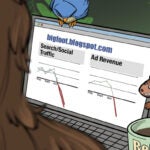 Video demand-side platform provider TubeMogul is adding a viewability-reporting feature within its dashboard today, promising to give marketers a record of where their video ads are seen and tools designed to improve ad avoidance.
Video demand-side platform provider TubeMogul is adding a viewability-reporting feature within its dashboard today, promising to give marketers a record of where their video ads are seen and tools designed to improve ad avoidance.
“By integrating viewability reporting into our ad-buying software, we can provide metrics at the site level,” said TubeMogul CEO Brett Wilson.
In lieu of an industry standard around video viewability, TubeMogul sees this seamless reporting as an alternative to the usual method of giving a viewability “grade,” something that is ambiguous and open to manipulation.
Some of the aspects of reporting viewable impressions TubeMogul said it will make transparent include what portion of a video ad is in view and how long it remained viewable; whether a window is active or if the user may be looking at another open tab; the player size; whether sound was on or not; and how many ad impressions were not measurable.
TubeMogul’s position as a DSP gives its viewability-reporting feature some credibility, as agency and marketing clients increasingly demand greater proof that an ad was seen.
“A number of things give us legitimacy when it comes to viewability,” Wilson said. “For one thing, we’re not arbitraging media, so we have no incentive to tell one story to an advertiser and another to a publisher.”
The release coincides with the publication of a TubeMogul white paper on the subject of video viewability (download the PDF here). The company, which has spearheaded the OpenVideoView (OpenVV) consortium with ad-tech vendors including BrightRoll, Innovid, LiveRail, SpotXchange and others, discusses in the white paper overall rates of viewability for exchanges, direct buys and how much video is actually measurable for any kind of viewability.
The white paper, which studied the comScore top 100 sites, indicates the state of video viewability is poor, even when it comes to direct buys.
For instance, a typical piece of run-of-network, remnant buy is 22.8% viewable in the first 5 seconds of playback; on average, a so-called “premium” piece of inventory that is directly sold averages 48.9% viewability.
So what accounts for the lag? It’s the confusion driven by the notion of viewability, without a standard, being “in the eye of the beholder.” Second, it’s the confusion caused by the use of general display standards of viewability being applied to video, which given the sound and motion in addition to “sight,” complicates matters considerably.
For example, several major video ad servers surveyed for the white paper said they consider muted videos as viewable, while others said they hew to a stricter accounting of viewability and require that the sound be on during the ad.
“While many platforms and tools have now adopted the display standard when reporting video viewability to help drive consistent use of this measure, we want a standard to go beyond the coordinates of where an ad appears on the page for 1 second and take into account other factors that impact if the user is actually being exposed to the ad,” said Cheryl Stump, director of Audience On Demand at VivaKi, in an email. “We adamantly believe that all factors — in-view, length of the view, active tab, player size and sound execution — should be reported in order to provide the most comprehensive insight into how a campaign is performing and where improvements can be made.”
Is an industry standard for video viewability imminent?
“As an entrepreneur, I’m naturally impatient,” Wilson said, “but I feel the Media Ratings Council and Interactive Advertising Bureau are moving the process along.”














